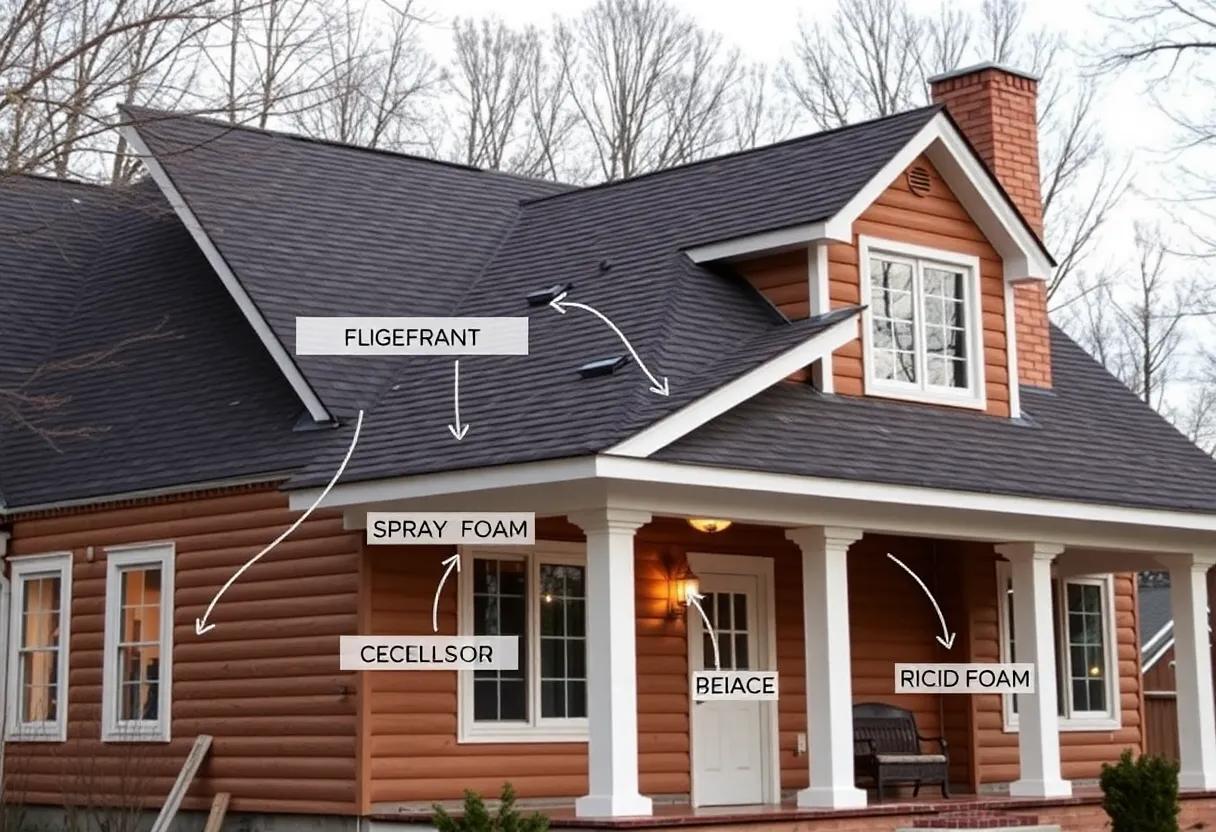

Explore different types of roof insulation to maximize energy efficiency in your home.
Article Sponsored by:
Mays Contracting is more than just a roofing company; it’s a family legacy built on trust and quality. Founded in 1979, we’ve been serving the community for over four decades. Our story began with a simple vision: to provide exceptional roofing services for both residential and commercial properties. This vision has guided us ever since, as we’ve grown from a small, family-run operation to a trusted name in the industry.
In the realm of energy efficiency, roof insulation plays a pivotal role. Selecting the most suitable insulation type can lead to substantial long-term savings on energy bills. This article aims to guide you through the essentials of choosing effective roof insulation, focusing on key materials, their properties, and considerations to maximize efficiency.
Roof insulation acts as a barrier to heat flow, helping to keep your home warm in winter and cool in summer. This efficiency reduces your reliance on heating and cooling systems, thereby saving energy and lowering utility costs. Understanding insulation types and their respective R-values is crucial in making informed decisions.
The R-value measures an insulation material’s thermal resistance. A higher R-value indicates better insulating effectiveness. Depending on your geographical location, local climate, and the type of roof, the required R-value can vary significantly.
When selecting insulation materials, consider the following common types:
Fiberglass is a popular choice for roof insulation, made from fine glass fibers. It is available in batts, rolls, and loose-fill forms. Notable characteristics of fiberglass include:
Spray foam insulation consists of polyurethane, expanding upon application to fill gaps and cavities. Key features include:
Made from recycled paper products, cellulose insulation is an eco-friendly option. Consider its attributes:
Rigid foam boards provide high insulating values with minimal thickness. Their properties include:
Choosing the right roof insulation requires careful consideration of several factors:
Your local climate impacts insulation requirements significantly. Colder climates necessitate high R-values for optimal thermal resistance, while milder climates might allow for lower R-values. Evaluate your specific needs based on your area’s weather patterns.
The design of your roof also determines insulation choices. Flat, sloped, and cathedral roofs each require tailored insulation approaches. For instance, flat roofs may benefit from rigid foam, while sloped roofs can efficiently utilize batt or roll insulation.
Different insulation materials require various installation techniques. Spray foam often necessitates professional installation, while fiberglass and cellulose may afford DIY opportunities. Choose an installation approach that aligns with your skill level and budget.
Cost is a significant factor when selecting insulation. While higher R-value materials like spray foam may have higher initial costs, they offer substantial energy savings over time. Evaluate the long-term benefits versus upfront expenses.
With increasing environmental awareness, many homeowners seek eco-friendly insulation options. Products made from recycled materials or natural substances, such as cellulose or cotton, reduce the carbon footprint. Evaluate the sustainability of each material during your selection process.
Investing in quality roof insulation offers numerous energy-saving advantages:
Effective insulation diminishes the demand for heating and cooling, leading to lower utility costs. Homeowners typically notice significant savings in their monthly energy bills.
Proper insulation ensures consistent indoor temperatures, enhancing comfort throughout the year. Say goodbye to drafty rooms in winter and overheated spaces in summer.
Energy-efficient homes reduce overall energy consumption. This translates to lower greenhouse gas emissions, contributing positively to the environment.
Homes with high-quality insulation tend to have a higher market value. Potential buyers are increasingly looking for energy-efficient features, making insulation a valuable investment.
While insulation requires minimal maintenance, monitoring it for signs of degradation is crucial. Keep an eye out for:
Inspect for signs of moisture buildup, which can lead to mold growth. Ensuring proper ventilation in your attic space is essential for moisture control.
Some insulation materials, such as cellulose, can settle over time, reducing their effectiveness. Periodic inspections ensure optimal performance.
Rodents and insects can damage insulation materials. Implement pest control measures to safeguard insulation integrity.
Selecting the right roof insulation is a crucial decision for homeowners aiming for long-term energy savings. **Understand insulation types, evaluate your home’s specific needs, and consider factors like climate and budget**. By carefully choosing effective insulation, homeowners can significantly reduce energy costs, enhance comfort, and contribute positively to the environment.

Quality Roof Construction and Repair in Lexington, Richland, Newberry and Laurens Counties for over 40 Years.
News Summary Barry Dooley, a beloved family member and community figure from Richland County, passed…
News Summary Greenville recently celebrated Michelin North America, Inc.'s 50-year presence in South Carolina. Local…
News Summary In an unexpected twist, 43 monkeys escaped from the Alpha Genesis Primate Research…
News Summary South Carolina has officially been declared the top growth state in 2024 by…
News Summary After a thrilling win over Texas A&M, Columbia, SC, experienced chaos as a…
News Summary South Carolina's tourism sector has surged by 65% over the last decade, generating…